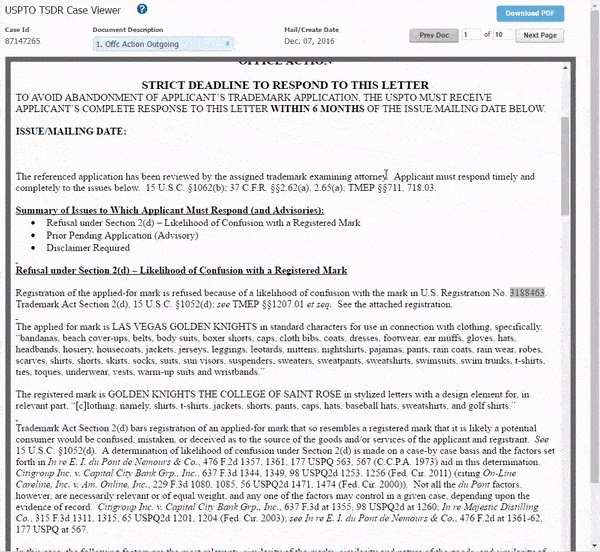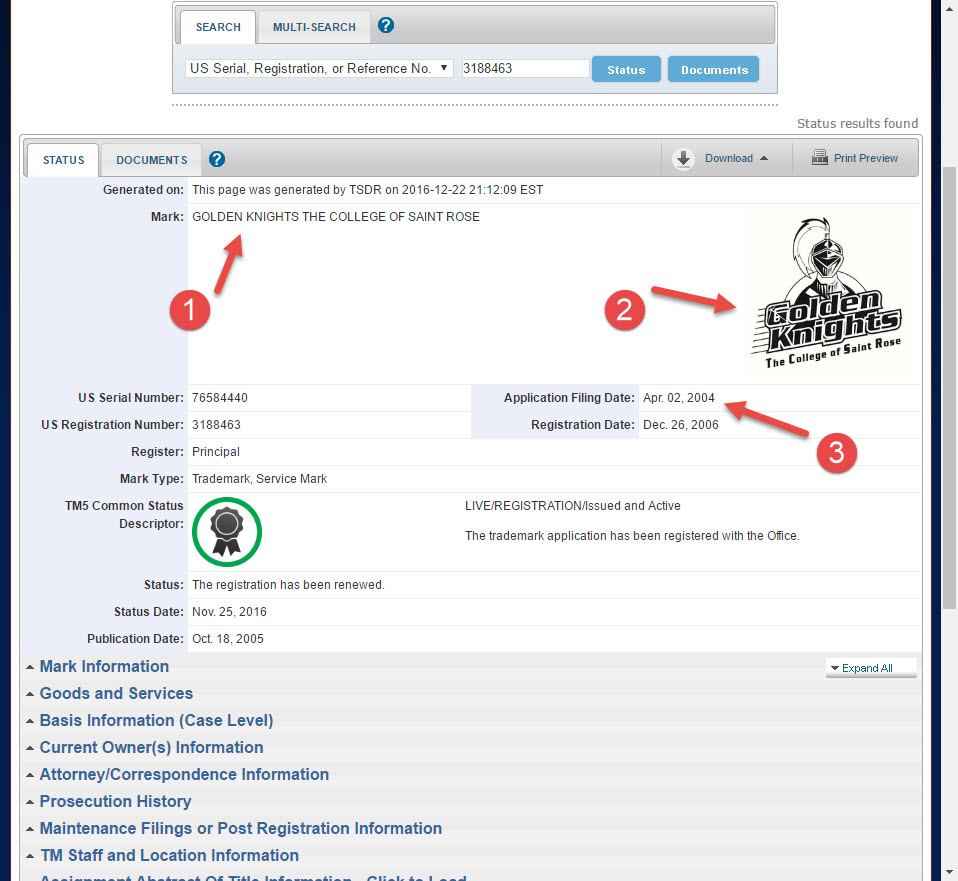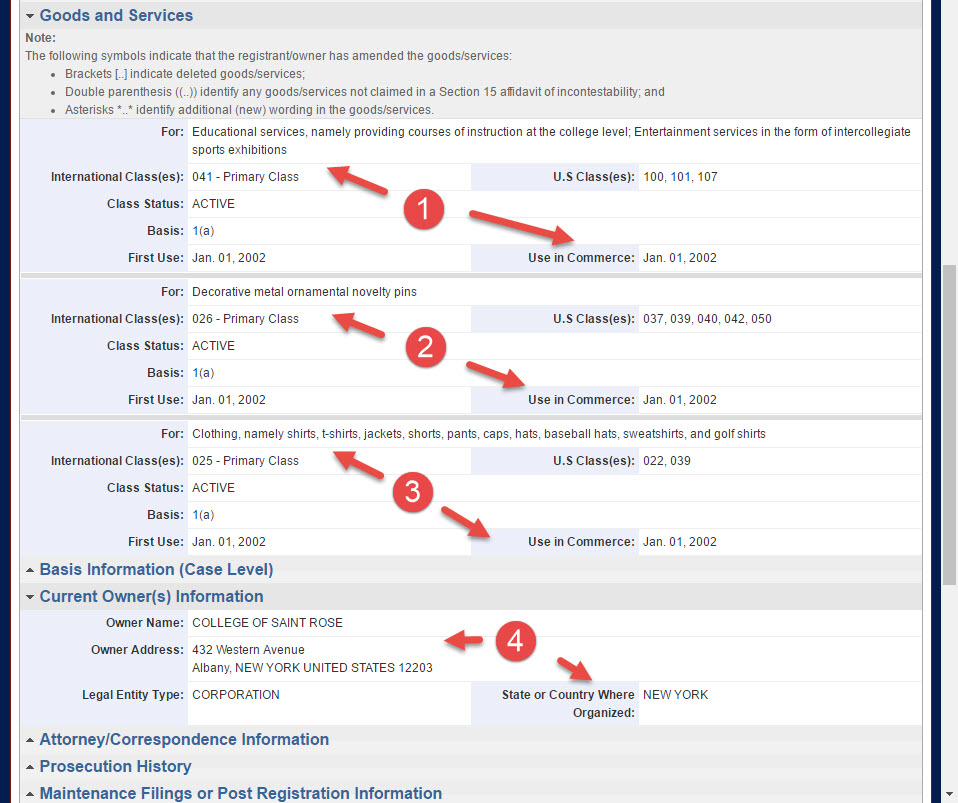Trademark Office Actions: Analyzing a Likelihood of Confusion Refusal
If you have filed a trademark application, there is a chance the United States Patent and Trademark Office may deny your application based on a prior trademark that another person or company registered before you filed your trademark application. This is called a “likelihood of confusion” rejection under Section 2(d) of the Lanham Act, the United States trademark law. This can be extremely frustrating and confusing, but this article will assist you in analyzing your Office Action to get a better idea of the best way to move forward.
Step 1: Carefully Read the Office Action
First, carefully read the legal analysis by the government attorney after “Refusal under Section 2(d) – Likelihood of Confusion with a Registered Mark.” Did the government attorney reject all of your goods and services, or just some? Did he or she give any specific reasoning for why it thought the marks would be confusing? Take note of all of those specific arguments, because there is a process for appealing the refusal of the trademark to counter the arguments made by the Examining Attorney.
Also look at the other headings in the Office Action – did the Examining Attorney reject your application for other reasons? Sometimes, fixing those other problems, like clarifying the goods and services, will help differentiate your mark from the problematic trademark registration.
Step 2: Look Up the Cited Registration
Next, look up the Cited Registration (what we will call the other trademark registration that the USPTO attorney found problematic) in the USPTO’s TSDR database, at http://tsdr.uspto.gov/. Below is an animation showing where to find the cited registration’s registration number (using an Office Action recently issued to a new NHL team, the Las Vegas Golden Knights)

This will pull up the Cited Registration’s database entry with the United States Patent & Trademark Office. In our example, the LAS VEGAS GOLDEN KNIGHTS trademark application was refused based on a likelihood of confusion with GOLDEN KNIGHTS College of Saint Rose logo registration, seen at the end of the animation above.
Step 3: Analyze the Basic Details of the Cited Registration

Elements of the Main Registration Page:
- Literal Portion of the Design Mark
- The Logo/Design
- The date the application was filed, or its “priority” date
Pay particular attention to the (#1) “literal” portion of the mark, which will display all of the literal words within the trademark. The Examining Attorney will usually give more weight to those literal words than to a design. The logo (#2) will show any design being protected. If you see a word in block letters, then the word itself is being protected (not any specific design.) Finally, the (#3) priority date will show you the earliest date the Registrant can claim for the federal benefits it receives from its registration. If that priority date is before your first-use date (and the registered mark is still in use) then you may have a hard time saying that you were the first user of the trademark and you may need to adjust your strategy.
Now consider your trademark, does the trademark (including the literal and design portions) resemble your trademark? If your trademark and the Cited Registration trademark share words, are those words common or descriptive in your industry? Considering these factors will help in crafting a potential response to the government attorney.
Step 4: Analyze the Goods and Services, First Use Dates, and Owner

Next, look at the goods and services (#1-3, above) of the Cited Registration, along with the alleged “First Use in Commerce date.”
Note: These dates are not binding and were self-reported by the registrant. Do not rely on these as conclusive evidence of the actual first date of use and always do additional research.
Now that you’ve looked at the Cited Registration, consider your own first use dates and your listed goods and services.
For the first-use dates, can you claim a date earlier then what they claimed? If so, you may be able to cancel their trademark (if it hasn’t been registered for more than five years). Keep in mind that it is always possible that they have earlier (or later) use than what they listed on the registration. You always have to do additional research on first-use dates to confirm. If you act before having all of the information you could open yourself up to legal problems in the future.
Also, consider whether a consumer would believe that your goods/services would also be sold by sellers of the Registrant’s goods and services. For example, consumers would expect the owner of a hotel to also offer bar or restaurant services because many hotels, in fact, do offer both.
Finally, look at the owner of the trademark. This will help you determine whether the trademark is still in use by that owner (as opposed to someone else unrelated to that owner.)
Additional Factors to Consider
It can be a tough call as to whether trademarks are confusingly similar, but generally, the Examining Attorney will look at whether they are similar in sight, sound, and meaning for related goods and services. There are, however, other factors, like whether the trademarks consist of fanciful or arbitrary words unrelated to the industry or whether the trademarks consist of weak, commonly used words, the channels of trade for the industry, and the sophistication of the relevant consumers that could mitigate these factors.
If the two marks have unique commercial impressions, then a good argument to the Examining Attorney may be that the marks create such distinctive impressions on consumers and that it is unlikely that the consumers would be confused. If the goods and services are not related, then you could also argue that point, saying that consumers are unlikely to believe that your goods and services and the Cited Registrations services come from the same source. For both of these arguments, you need to provide both evidence and cases to support your legal theory.
If the marks share the same impression and are for related goods and services, you may have a difficult time convincing the government attorney that the two trademarks, if co-existing in the marketplace, are unlikely to cause consumer confusion.
There are multiple factors that going into weighing these points and an effective office action response will provide a convincing legal theory supported by evidence and examples. This is where an experienced attorney can be highly effective, creating arguments that highlight the strong arguments while explaining and mitigating the weak points.
However, if there is a good chance that the trademarks are confusingly similar, then you may consider not responding to the government attorney and reaching out to the owner of the mark to explain why you believe that you have superior rights. You may also consider filing a Petition to Cancel the Cited Registration if you believe you have prior rights, that the mark is no longer in use, or what the Registered Mark was not in use when the Registrant said it was (usually the filing of an application or the filing of a Statement of Use.)
Contact Our Experienced Attorneys
As you can see by the scope of issues discussed in this article, overcoming a Section 2(d) Office Action can be complicated, and, there are many paths to explore. Our law firm has extensive experience in dealing with likelihood of confusion refusals and would be happy to complete a complimentary review of your Office Action to see if we can assist you. If you would like a trademark attorney to review your Office Action please simply complete our Contact Form found on this Web site.
Do you need assistance with a trademark matter?
Contact an Attorney Today